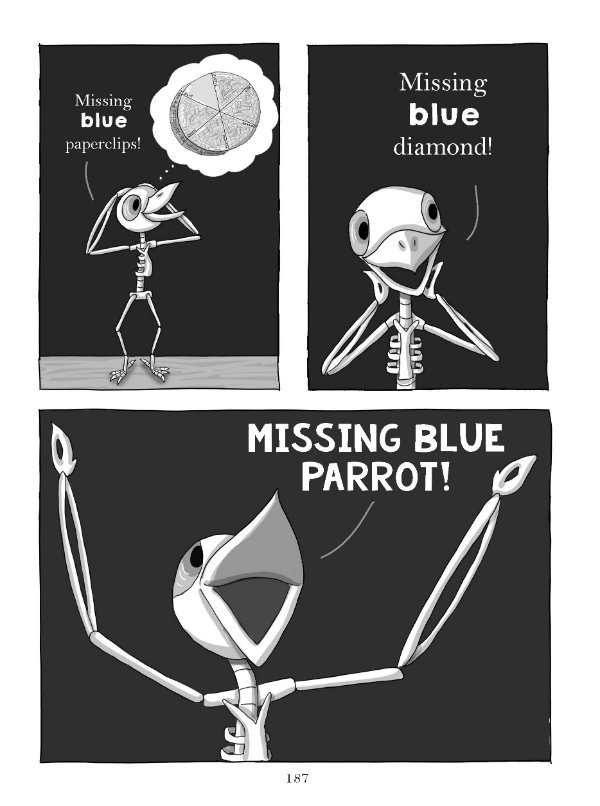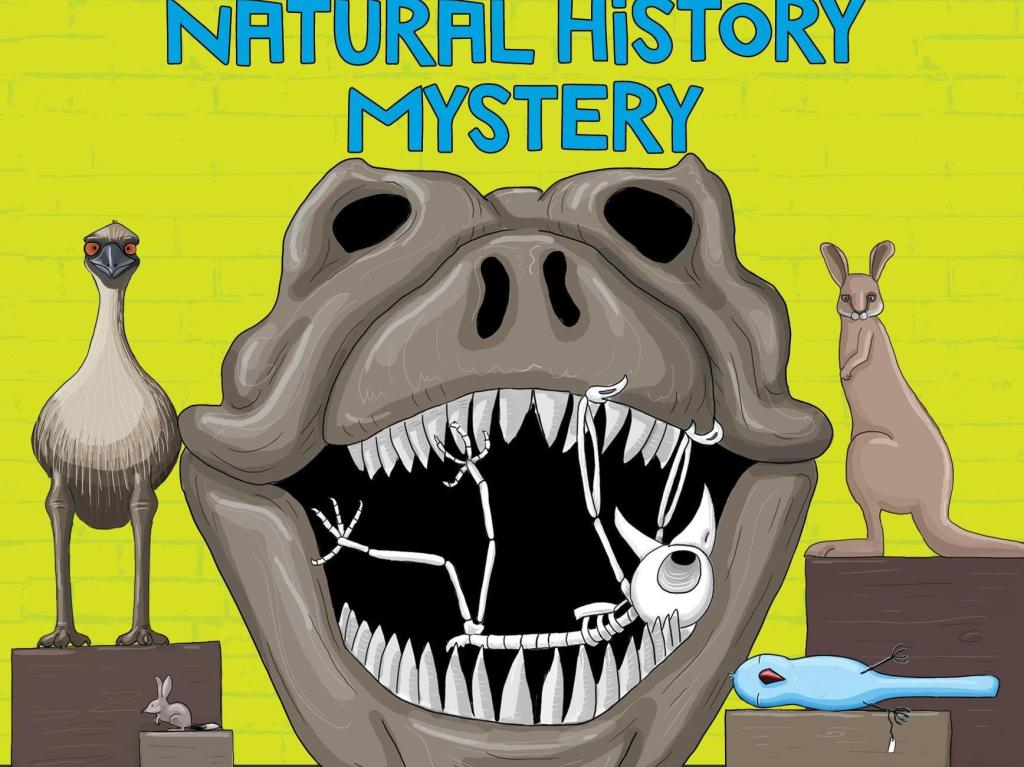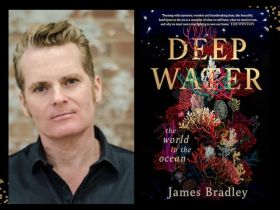Sherlock Bones and the Natural History Mystery is the first graphic novel by children’s author and illustrator Renée Treml (Wombat Big, Puggle Small; Colour for Curlews). It follows the adventures of Sherlock Bones, a talkative tawny frogmouth skeleton, and her companion Watts, a mute, stuffed Indian ringneck parrot, as they explore their home in a natural history museum after dark, attempting to find out who stole the Royal Blue Diamond from the museum’s geology display.
Bones is a charming, chatty goofball and somewhat unreliable narrator who stumbles and pratfalls her way through her investigation. Her years as a museum exhibit have given her a good understanding of many historical morsels, like the invention of the paper clip or the etymology of the phrase ‘toodle-oo’. She happily muses on such things and more, both to her stuffed parrot friend and directly to her readers by breaking the fourth wall.
The investigation leads the two hopeful detectives to visit many of the museum’s exhibits, which are charmingly rich in educational detail. Diligent readers who take time to note the details in the background illustrations will enjoy learning about all manner of things including the 19th-century Pepper’s ghost illusion, the evolution of birds from dinosaurs, and the difference between butterflies and moths.
It’s a credit to Treml’s storytelling skills that none of these meticulous details derail the mystery central to the story. In fact, some of these details might even help readers solve the mystery before Bones and Watts do.
Treml’s usual artistic style, as seen in her previous children’s book illustrations, uses subtle shading and detailed texture to give her animal protagonists a convincing sense of depth. For Sherlock Bones she has adopted a more childlike line and relies mostly on simple greyscale shading for depth to recreate the dim museum-at-night setting. This has given the book a flatter, cartoony aesthetic that sits well alongside the pleasant silliness of her characters.

Sample artwork from Renée Treml’s Sherlock Bones and the Natural History Mystery.
This is a thick book – over 250 pages – set in standard paperback format instead of the larger page size of traditional graphic novels. This smaller page size has not restrained Treml’s panel composition, however. She is equally at home filling pages with a single panel for emphasis, running a conversation over three or four panels on a page, or using multi-panel grids to illustrate an action sequence more intricately. Some of her double-page splashes are compromised by the closeness of the interior margins of the book to the panels’ edges, but these pages remain largely intact in terms of their intention.
One other technical detail has similarly compromised this book’s otherwise delightful story and characterisation. Treml’s use of typeset fonts for dialogue, sound effects and background signage has created a noticeable disconnect between her words and her pictures.
Printed fonts, particularly serif fonts, tend to have a formal and regimented quality to them, and this has created a subtle mismatch with Treml’s lively and idiosyncratic line work. Although typefaces may be easier for younger readers to manage than hand lettering, this mismatch has a tendency to pull the reader out of the otherwise immersive story.
Treml does occasionally use hand-lettering to illustrate the odd poster or note, which inspires a regret that this comic was not entirely hand-lettered, as well as a hope that future instalments of the Sherlock Bones mysteries, if they eventuate, avoid the use of fonts completely.
This niggle aside, Sherlock Bones and the Natural History Mystery is a funny and charming graphic novel for children. It guides its readers through a solvable mystery that keeps things mysterious enough to be genuinely stimulating. This book will reward young readers and please parents with the way it treats learning as play, the way it provides education and entertainment in equal measure, and the way it assumes its audience are intelligent and curious.
3½ stars: ★★★☆
ISBN: 9781760523954
Imprint: A & U Children
Age: 6 – 9
Pages: 272
RRP: $14.99





